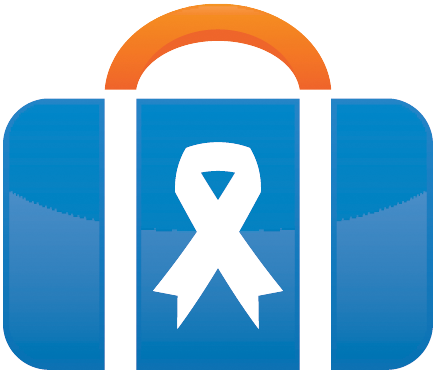Only 26% of donors cite event attendance as something that helps them feel connected to the nonprofits they support. But what if these events were tailored to their preferences and crafted with their specific needs in mind?
Gathering and assessing data empowers you to improve your auction donors’ experience with your organization. Data can reveal valuable insights into your audience’s interests and motivations, helping you enhance your auction events and build stronger relationships over time.
This article will focus on collecting the right information before, during, and after your auction to plan better events. We’ll discuss the benefits of gathering several different types of data that will help you understand your auction donors on a deeper level.
1. Past Support Data
Auction donors likely have preexisting relationships with your nonprofit. Their past engagement can reveal valuable insights into how they might choose to participate in future auction events.
Use your donor management software to gather information about these individuals’ involvement history, including their:
- Donation history. Understanding donors’ giving preferences allows you to reach out after your auction with additional, targeted ways to continue supporting your cause and tailor future events to their giving patterns. For instance, donors might give more often during the year-end giving season rather than the summer months, signaling that a winter auction could be the right choice for your yearly event.
- Volunteer involvement. Review data in your volunteer management system to learn about the programs or projects donors have engaged with in the past. This information can reveal clues about the types of initiatives they’ll be willing to support in the future.
- Existing relationships. If auction attendees have preexisting relationships with volunteers, staff, or board members, these team members can personally invite donors to your auction events. Additionally, when conducting post-event follow-up, ask them to reach out to donors they know to solidify their connections to your cause.
Note any additional personal donor details you have in your records. For example, does a certain donor strictly prefer email communication? Was another a former beneficiary of your nonprofit’s programs? This extra information can help you further personalize your outreach efforts for your next auction event.
2. Marketing Response Analytics
An effective marketing strategy is critical for boosting auction registrations. The right data can help you understand whether your marketing approach resonates with supporters and how to make your outreach even more engaging.
Look at your marketing data from past auction campaigns and other initiatives to improve your marketing strategy. Analyze data points such as:
- Email open and click-through rates. Evaluate the subject lines, content, and calls to action of emails with high engagement to identify why they resonated with recipients. Additionally, compare your metrics to industry standards to better understand how your email campaigns perform in the broader context of other organizations’ efforts. Bloomerang’s email marketing for nonprofits guide explains that the average email open rate is 15-25% while the average email click-through rate for nonprofits is about 2.7%.
- RSVPs from different channels. Assess your RSVP data from previous auctions to see how many people responded via an emailed link, a social media post, or your website. Going forward, focus your marketing efforts on channels that resulted in the most RSVPs to improve your marketing return on investment (ROI). During the downtime between auction events, build your following on communication platforms that didn’t yield high engagement.
- Social media engagement metrics. Review data like post shares, likes, comments, and impressions to determine which social media channels received the highest engagement and which posts impacted registrations the most.
Optimize your marketing efforts through A/B testing, which involves creating two different versions of a marketing message and determining which is more engaging for your audience. For instance, you might send the same email with two different subject lines to two separate but similar audiences and track the results. Only change one element at a time to determine which specific adjustments actually impacted your marketing results.
3. Previous Auction Engagement Data
The data you collected throughout past auctions will reveal valuable insights into the best ways to plan your future events. Look back at past event data, assessing metrics like:
- Number of RSVPs versus actual attendance rate. Assess whether past events had major discrepancies between RSVPs and attendance to focus your future marketing efforts on increasing follow-through. For instance, you might create more event reminders to share on social media and via email. Or, you could avoid scheduling your auction when many supporters are likely out of town, like during spring break or the summer months.
- Event return on investment (ROI). Calculate your event’s ROI by subtracting the total cost of your event from its total revenue and then dividing that number by the total cost. This metric can help you evaluate what type of auction is most popular with your audience and whether certain themes or entertainment options appeal to attendees more than others. For instance, you may discover that your audience gravitates toward more formal, large-scale, gala-style events, or perhaps smaller, casual experiences suit your supporters best.
- The most active donors. Focus your marketing strategy on promoting VIP opportunities to these individuals or additional perks for their attendance. Call to personally invite them to your next event or ask for their feedback on what kinds of auction items they’d like to see.
- Additional revenue stream performance. Not every attendee will have the chance to win an item, so many supporters will likely gravitate toward different ways of showing support. Track additional revenue streams like in-kind gifts, direct monetary donations, merchandise sales, and raffles to evaluate which giving opportunities are most popular among auction attendees.
To easily evaluate this information, integrate your donor management software with your silent auction platform. That way, data can flow freely between systems, avoiding data siloes and improving your data analysis efforts.
4. Post-Event Feedback
Send attendees feedback surveys a day or two after your auction when the experience is still fresh in their minds. Include questions like these to discover valuable supporter insights:
- What motivated you to attend this event?
- Was the event check-in process streamlined and easy to follow? Why or why not?
- Was the bidding process easy to figure out? Why or why not?
- Were the auction items appealing to you? Why or why not?
- What did you enjoy most about the event?
- Did you engage with other fundraising opportunities besides bidding at the event? Why or why not?
- How can we make the event even better next year?
Add donors’ responses to their profiles in your constituent relationship management system (CRM) to note their unique preferences. For example, perhaps one participant said they were motivated to attend your event because they wanted to support your volunteer efforts. Make a note in their profile to send them information about upcoming volunteer opportunities and fundraising events that directly support your volunteer program.
Additionally, thank donors with appreciation notes and emails. Qgiv by Bloomerang’s silent auction guide recommends that you “[e]xplain how much you valued their participation and demonstrate donors’ impact on your mission.” Include data points, photos, videos, and direct quotes highlighting the difference donors make.
5. Post-Event Involvement Data
After your auction, determine how effectively you retained attendees’ attention and support by tracking their post-event involvement. Use the information in your donor database to answer the following questions:
- How many donors continued to support your nonprofit after your auction? Did they continue supporting your organization through monthly giving, in-kind donations, or other financial support?
- How many donors interacted with your organization in other ways? Did your auction donors stay involved by participating in your volunteer program or advocacy efforts?
- How many donors continued to engage with your marketing efforts? Did your donors continue opening your emails, engaging with your social media posts, or responding to your direct mail campaigns?
If you discover your donors’ post-event involvement is low, strengthen your donor stewardship approach. Call donors to thank them, describe their gifts’ impact, and maintain an open dialogue to show that you value their input. Provide an email address that donors can use to reach a member of your nonprofit’s staff with any questions or concerns they may have.
The more data you gather about your auction donors throughout the event cycle, the better you can design an event that exceeds their expectations and raises more for your mission. Continuously gathering, assessing, and implementing audience data will help you improve your strategy over time.





AUCTION
The more information you gather about your auction donors over the course of the event, the better you’ll be able to plan an event that meets their needs while earning more money for your cause. Take a continuous approach to acquiring and analyzing audience data as you consistently put your ideas into practice. I’d like to read more articles like this